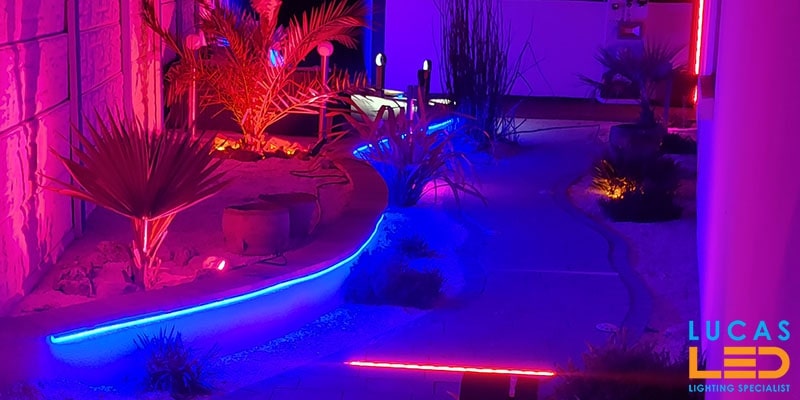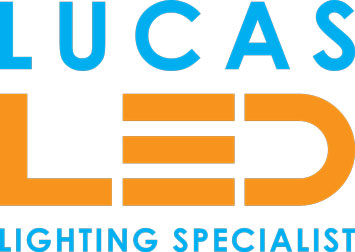Up And Down Lighters - When To Use Them?

What are up/down lights?
First, let's start with the basics - what exactly are these lights? As the name might suggest, these terms refer to well/directional lighting fixtures that allow you to illuminate objects or surfaces from above or below. Seems simple enough, yes? Despite a simple premise, they give you quite varied possibilities - a well-placed light can give you stunning results or emphasize the best details of your garden.
When to use uplighting/downlighting?
Due to the sheer number of options, choosing the right outdoor light can be troublesome. Especially if it's your first time designing landscape lighting. Here are some tips on what to use up/down lights on:

What to uplight around your home
Uplighting is mostly used for illuminating specific points of interest around the garden, e.g., unique or majestic trees, sculptures, fountains, and particular architectural details of the home's exterior, like pillars and decorative elements. It's also the best option for showcasing something tall or features placed high up.
But that's not all - uplighting can be used for outlining space boundaries, dividing your garden into various areas, and adding another layer of security and safety lights. Lamps with wider beams can be used for light-washing walls and fences (or any other flat surfaces), bringing focus to their surfaces and adding depth to them. This can work wonders with shadows when used on an uneven surface.
Speaking of shadows - when placed right, up lights can add depth and subtlety to your landscape, adding some much-needed atmosphere with chiaroscuro effects.

When does uplighting work best?
You should use it for especially highlighting your favourite items/objects on your property - be it a peculiar tree, a hardscape element or simply an architectural column that supports your roof. Besides that, choose them when you need to add contrast to larger areas, e.g., rockeries or extensive flowerbeds. Or just use this simple rule - if it sticks up high above the ground, uplight will serve it right.
Well lights or directional lights?
This depends solely on the effect you want to achieve.
Well lights are a type of recessed lights that go all into the ground - they provide you with a straight-up light beam. Use them to show off tall objects or as safety lighting for paths and driveways.
On the other hand, directional lights come with a stake/pole of various heights - they stick out of the ground and allow some adjusting to the beam's angle. Use them to add variety to other lighting styles, uplighting walls and smaller objects like flower beds and shrubberies. Additionally, they can be placed further away from the illuminated object, allowing for more custom lighting designs.
Downlighting - what is it good for?
Downlighting can create a warm and welcoming feel when used in outdoor wall lights, or add another layer of depth to landscapes. It's often used for showcasing water features, flowerbeds, and other ground-level features. Moreover, it can work as safety lighting near entrance points or paths, when paired with a tall bollard lamp or high-mounted wall light.
Moonlighting - a popular downlight trend
Moonlighting is a specific effect that's meant to mimic the light of a full moon. It produces interesting illumination and is rather easy to achieve - all you have to do is place a downlight lamp high on the treetop of a big tree. The light will shine through its branches, creating fascinating patterns on the ground. This type of lighting works especially great for relaxation areas.
When should you use down lights?
To use them properly, you'll need something taller than the illuminated object/area - the higher up the lamp sits, the wider the surface it can illuminate. As mentioned above, downlight is commonly used for outdoor wall lights - they can work both as safety and exhibition lights. Keep in mind that downlighting provides you with a subtler glow than uplighting, making it perfect when you need just slight illumination, e.g., around paths or on patios/gazebos.
Can't choose? Use both!
The greatest thing about those lighting methods is that they can be used jointly - due to varying effects, they can complement each other. In fact, they often work better, when paired together - when combined, they can add both subtlety and drama to your outdoor space.
or example, when mixing them together, you can:
Make the ground-level downlighting more subtle and natural when softening the area with uplighting.
Add more nature-like scenes with additional angles of light.
Guide the observer's eyes to specific areas while keeping them lit with mood light.
Things to consider while picking up outdoor lights
Setting aside the obvious criteria like lamp styles, types of materials, brands etc., there are two important factors for choosing the right outdoor light. First, make sure you have enough space for them. Nothing spoils the mood like a meticulously crafted lamp that's half covered by the gutter-pipe.
The second important thing is IP rating. This two-digit number tells us how good the lamp is at withstanding solid matter (first number from 0 to 6) and liquids (second one, 0-8). An absolute minimum for wall-mounted fixtures is IP44, while the most optimal would be an IP rating of 65. The waterproof over 5 is only required for specific situations, so in most cases you won't have to pick the ones above 6 - they can withstand almost any weather conditions.
LED lights - great value lighting for home and its exterior
LED bulbs might not be the cheapest option, but they definitely give you the best longevity and customization options. This makes them one of the most flexible light sources currently available on the market, perfect for both indoor and outdoor use.















